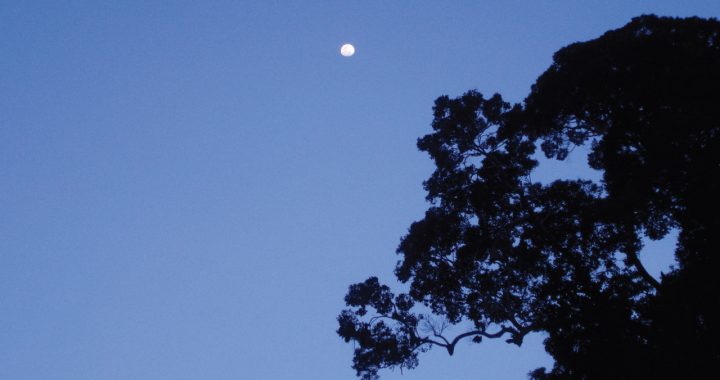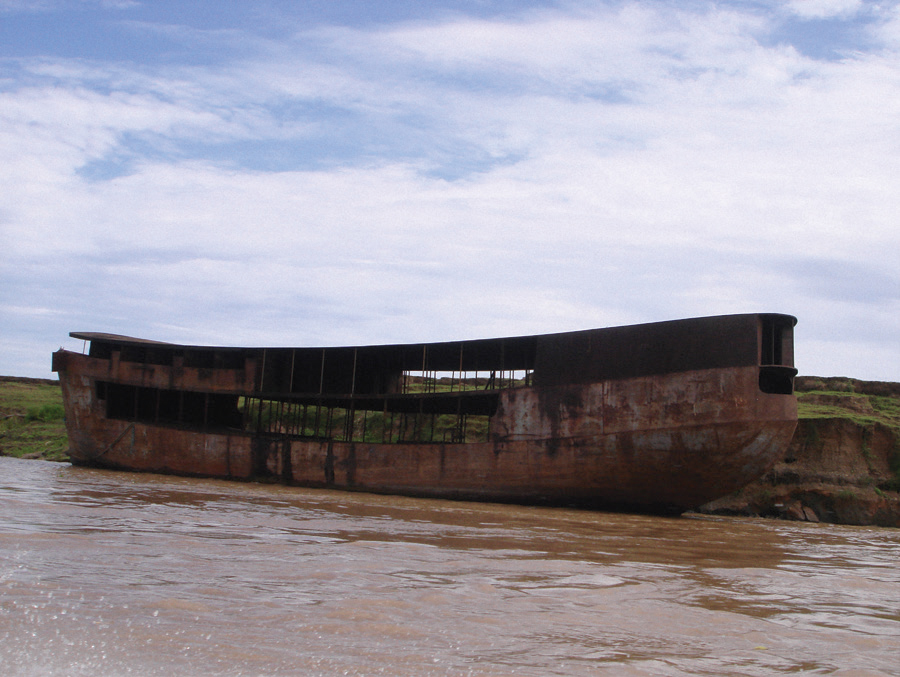“First I thought I was fighting for the rubber tappers, then I thought I was fighting for the Amazon, then I realized I was fighting for HUMANITY” (Chico Mendes).
June 2008 – Lago Mamori, Amazonas, Brazil
Calm and with little movement, the expanse of the lake stretches seemingly endlessly, gently murmuring as it touches the wood of the canoe. High in the sky, the moon shines, a floating beacon in the black of a star-studded night. From the shores, waves of rustling, ticking, plopping, and shouting sound like a grand orchestra. Caimans float by in the dark, their leathery heads undisturbed. There’s splashing, the snorting of dolphins. Reflections of the shining universe mix with the ballet of fireflies in the floating grasses into a glittering tapestry of living confetti. I push the paddle through the mirror-like surface and set course towards the dark shadows between the trees, pillars in a flooded cathedral, where the choir resides.
Half a year later, in December 2008, the Australian sound artist, composer, and producer Lawrence English visits Lago Mamori. He is one of the participants in Francisco Lopéz’s Mamori ArtLab. Mamori Sound Project, as the workshop organized several times on the website of the Spanish, experimental musician and sound artist Francisco Lopéz is called, is a two-week workshop/residency for professional and semi-professional sound artists and composers with experience in sound experimentation and field recordings. The location for the workshop, which last took place in October 2011, is the Amazon rainforest near Lake Mamori in the Brazilian state of Amazonas. The focus of the workshop was not so much on technique but on “a creative approach to working with field recordings, through an extensive exploration of natural sound environments”.
In 2021, Lawrence English (finally) managed to compress the fifty hours of field recordings he made in the Amazon into a coherent acoustic and temporally accurate work, 37 minutes of intense tropical rainforest life, A Mirror Holds The Sky. The album with that title is released along with a 48-page bound book of photographs on Lawrence English’s own Room40 label.
It’s a special title. And what he means by it, I’ve just described myself, he says. No, Lawrence English did not experience Lake Mamori in that way at night, more during the day. But even then, the dark water, almost black, very different from the muddy color of the further away Madeira River or the Amazon River (here called Solimões), can appear as a mirror capturing the blue of the sky and the clouds floating in it: A Mirror Holds The Sky.
“It’s about the light. It’s about the surface, the reflective quality, the surface of light. It’s a mirror and it holds the sky. You are there in the middle of the lake and you look down and it’s silent, there’s no movement. You’re in the boat and suddenly you’re overwhelmed by this immense feeling that everything down there is being held, and that’s in a way quite disturbing. My memories of that situation are from the daytime. I have different memories of the jungle at night. But it’s how you describe it, the realization of a 360-degree situation, the feeling of being embedded in this place. You’re literally floating, but metaphorically you’re floating between two spaces. There’s the feeling of earth, of being grounded, but also of reaching out to what’s above. The surface and how it worked had something that wasn’t necessarily unnatural, but was unusual, remarkable to see and experience. I’ve been to many different lakes, but there’s something about the quality of that water and the color of the lake. It’s almost as if that top layer of water is an incredible mirror, the lens between the two that somehow holds it.”
The reason why this place on earth makes such an impression is simple to explain, he wrote upon the release of A Mirror Holds The Sky on the website Bandcamp:
“The Amazon dwarfs us. This is not some vulgar display of power on its behalf, rather its a tangible reminder of our place in, and on, this planet. Once you step into the Amazon it prompts us (strongly) to refocus the perspective we hold of ourselves, of our ways of being, of our understandings and it (not so gently) reminds us that we are but one very minor function in an equation that extends in all directions across time, and space.
The jungle is never silent. Even when you might expect the Amazon to be hushed, in those hours before dawn or in the heat of the midday sun, it is hardly what could be described as quiet. What might be true to say though is during these moments where the chorus of insects takes a step back, the jungle opens just a little. To listen in the jungle is to listen in close relief – in every square metre, thousands of insect cry out, their voices reducing the horizon of listening to a matter of centimetres at certain times of the day (and night). The sensation is sensorially disorienting and frankly, overpowering.”
The sound artist writes that it almost took him a decade to figure out what to do with his Amazon sound archive. A significant stimulus was Chico Dub of Festival Novas Frequências in Rio de Janeiro who encouraged him to realize a presentation as part of his program in 2019. That invitation “restarted” his ears, he says, and paved the way to unlock the bulk of fifty hours of recordings.
September 2010 – Rio Juma, Amazonas, Brazil
I’m sitting on the riverbank, basking in the warmth of the setting sun. The sky is filled with an explosion of colours, from golden yellow to reddish orange, from bright blue to deep purple. Suddenly the water starts to bubble. Dozens of fish break the surface and leap into the waiting canoe – a spectacle of biblical proportions. The rhythm of life is manifested here in overwhelming numbers, from birds on a tree resembling the cover of a Talk Talk album, to glowing fireflies dancing on the water, to fish fleeing to their deaths as dolphins chase them.
The quantity of life in the Amazon is overwhelming.
“That was one of the things where I was glad to be able to make very long recordings, almost a day, that period of time. If you record from, for example, one o’clock in the morning until nine o’clock in the morning, and then listen to the ways in which the insects and frogs overlap during that time, it’s remarkable how, as time passes, one group of life in the forest passes the baton to another. There’s a fantastic time just before dawn breaks. Before the birds start, there’s first a crescendo of crickets and frogs, and that’s painfully loud. If you’re in the forest at night, as I’ve done a few times, the sound can manifest in a way that feels downright uncomfortable. It’s tiring for your ears, because a lot of information takes place in a different frequency range than we’re used to.
But it was extraordinarily interesting to recognize patterns in it. If you look or listen to it from a micro-perspective, you discover very polyrhythmic exchanges between animals of the same species, which are then interrupted by other events happening in the forest, whether it’s a howler monkey screaming at two o’clock in the morning or another mammal. Or the Horned Screamer. This bird manifests itself with extraordinary vocal display. Its sound cuts through everything, sounds above all else. The one time I could get above the canopy of the forest, I made a recording of it. It’s in the last passage of the piece. For a long time, I couldn’t identify the call. I really thought it was a mammal. I know there are no gibbons in that part of the world, but it sounded to me like communication between mammals. I could only identify the sound because I happened to be listening to Jean Roche’s Birds Of Venezuela. There’s a fantastic representation of the Horned Screamer on it. I heard that and made the connection.
I have my recordings, but I’m still discovering what all is in them. It’s only been two weeks since I did some research into vocalizations of fish, and discovered that I have barking piranhas in my recordings. I only identified that sound a few weeks ago. I first thought it was a Boto Rosa (pink dolphin – CCE), that it was a variation on the Boto Rosa call, but it’s very clearly the sound of barking piranhas. It’s very special. It’s now thirteen years later and I’m still discovering what’s in my recordings. It’s a kind of strange sonic archaeology.”
The first photo in your book with the album shows a shipwreck lying on a riverbank not far from the famous Encontro das Águas, the confluence of the Rio Negro with the Amazon near Manaus. What’s your idea of that boat?
“I saw the thing lying there and for me, the shape of the boat had a strong suggestive connection with Fitzcarraldo, especially that idea of taking a boat over the hill. There were quite a few wrecks along the way that sometimes really radiated how difficult the place can be, that it’s not a permanent place for machines. The environment is not friendly to metals. Seeing how the wreck has degraded there’s a sense of reclamation, that eventually the jungle takes back the space.”
The boat evokes associations with an abandoned Noah’s Ark for me.
“Absolutely. The feeling that everything there has jumped out. And then there’s the Amazon.”
Photos © Lawrence English, from A Mirror Holds The Sky
Video A Mirror Holds The Sky
Selected discography:
William Basinski & Lawrence English – Selva Oscura
Merzbow & Lawrence English – Eternal Stalker
Loscil & Lawrence English – Colours Of Air
Lawrence English & Werner Dafeldecker – Tropic Of Capricorn
David Toop & Lawrence English – The Shell That Speaks The Sea




